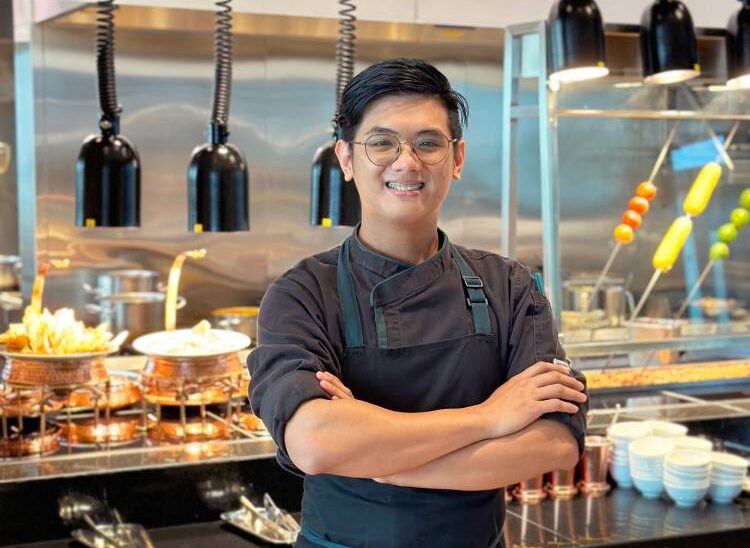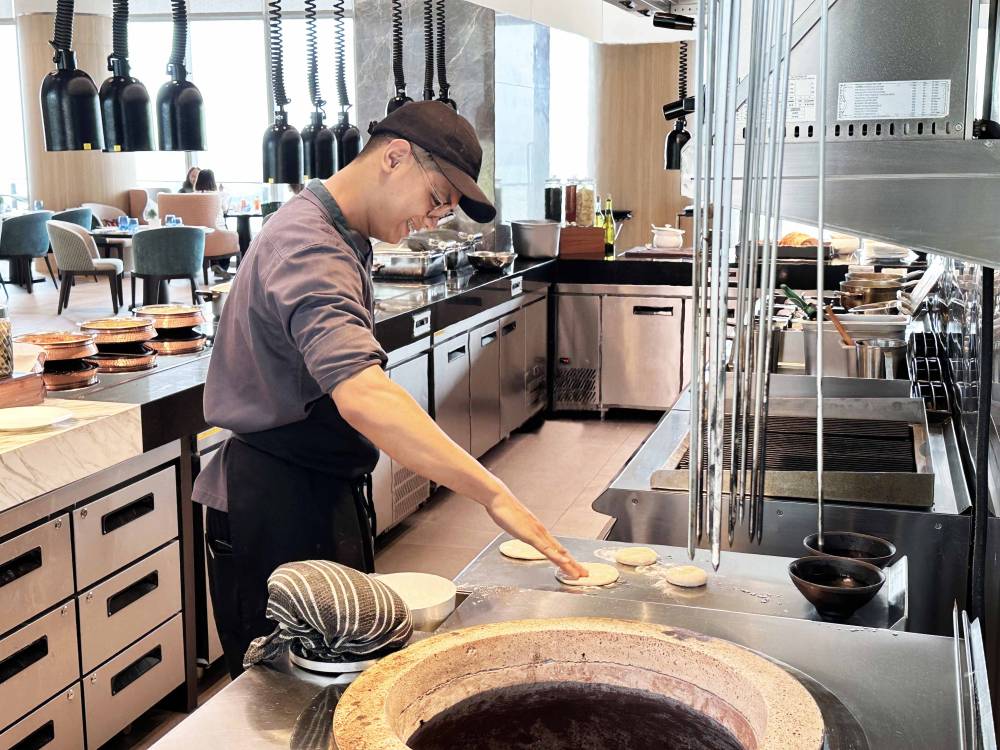This young Pinoy chef cooks ‘unapologetically Indian’ food

He’s only 28, but Emmanuel Santos is already the head of the Indian food section at Cyan, the all-day dining outlet at Lanson Place Mall of Asia. The hotel and serviced apartment has been open for a couple of years now and caters to some of the BPO companies with offices in the sprawling complex in Pasay City.
Santos has long been interested in Indian cuisine, and apprenticed with the Indian chef of Heat at the Edsa Shangri-La Hotel after graduating from university.
“I really wanted to focus on Indian food because I found it interesting, even if it seemed like few appreciated its flavors,” he told Lifestyle.
During his spare time, he would read up and do his own research. He was part of a team that went on to open Indus Modern Indian Cuisine, a restaurant in BGC. During the pandemic lockdowns, he stayed with the Indian chef and was able to learn more from him. In total, Santos apprenticed with him for five years before he was asked to join Lanson Place.
Most people think Indian food consists mainly of curries and flat breads, gulab jamun and chutneys, but there is more to it than that. As writer Madhur Jaffrey wrote in Saveur magazine, “India’s food reflects its geographical variation—the north eats wheat, the south consumes rice, and the coasts thrive on coconut milk and fish—as well as its religious diversity.”

Evolving
At Cyan, Santos is in charge of preparing a revolving and evolving range of dishes on the buffet. On weekdays, there are four items to choose from, but on weekends, he prepares seven.
“I have a separate work area, table and kitchen utensils because we don’t serve pork or beef dishes in the Indian section; only chicken, lamb and fish. I also have a separate freezer for the ingredients that I use.”
He makes the naan, a soft and chewy flatbread, to order because as he pointed out, “It gets tough when left on the buffet.” He makes three kinds: a plain one, one with cheese and another with garlic.
The afternoon we were there, Santos kneaded the dough on a granite table, filled it with cheese and garlic before quickly cooking it in the tandoor. It can be dipped in dal makhani (creamy lentils) or the thick, tart yogurt they make in-house daily. “We also use the yogurt in our breakfast compotes.”

The hot dishes he prepares come from both the northern and southern Indian regions. North is represented by robust, creamy curries and tandoori dishes, while the south consists of coconut-rich stews. “They use a lot of dairy in the north and flavor their dishes with cumin and cashews, while in the south, which is coastal, they eat seafood flavored with kaffir and mustard seeds,” Santos said.
As Jaffrey wrote for Saveur, “Everywhere in India, there is one common element: the masterful use of spices.”
We sampled the lentils and a juicy chicken dish that was spicy and flavorful. We brought the fieriness down a notch with a dab of cool yogurt. Does Santos plan to temper the spice levels? “No, the food I serve is unapologetically Indian.”
So far, the Indian clients who come over are impressed when they find out that it’s a Filipino chef cooking their dishes. “They sometimes want to meet and talk to me after their meal. They tell me they enjoyed and often come back with others since their offices are located nearby. Filipinos are becoming more open to trying out Indian food. They’re still not as adventurous, but we’re getting there,” Santos said.

















